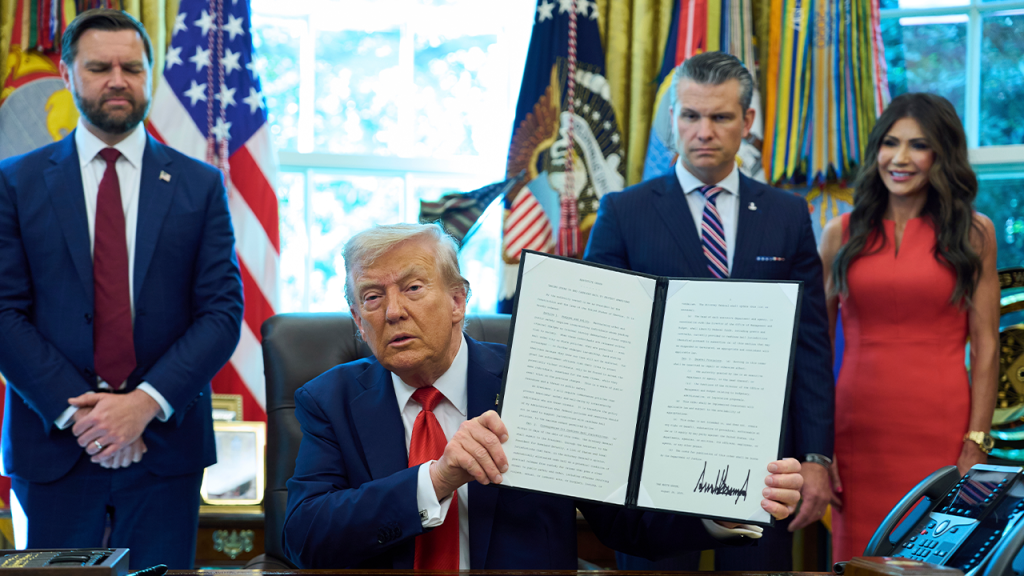The Trump Administration’s Stance on Cashless Bail Policies
In a bold move against the rising trend of cashless bail policies across America, former President Donald Trump recently issued a new executive order aimed at curbing what he views as a major contributor to crime in urban centers. The order specifically targets jurisdictions that have implemented policies allowing arrested individuals to be released before trial without posting bail. While presidents have limited direct control over local law enforcement policies, Trump’s approach leverages federal resources to influence how cities manage their criminal justice systems.
At the heart of the executive order is a directive to Attorney General Pam Bondi to compile a comprehensive list of all jurisdictions that have implemented cashless bail within 30 days. The order goes further, instructing federal agencies to identify which grants and contracts can be suspended to these jurisdictions. This financial pressure represents one of the few tools available to a president seeking to influence local crime policies. “While the president may not have direct ability to control the law enforcement of these individual cities and states, what he does have is the power of the purse strings,” explains Randolph Rice, a Baltimore attorney and legal analyst. This approach essentially gives local governments a choice: reconsider cashless bail policies or potentially lose federal funding.
In Washington, D.C., where the federal government has more direct jurisdiction, Trump’s approach has been even more hands-on. He has ordered the Justice Department to file federal charges and seek pretrial detention whenever possible in D.C. cases. According to Mayor Muriel Bowser, this intervention has already shown results, with carjackings reportedly down more than 80% in a 20-day period. Rice expresses bewilderment that other crime-challenged cities wouldn’t welcome similar federal assistance, comparing it to refusing help from additional fire trucks when your house is burning down. This sentiment reflects the frustration many law enforcement professionals feel when politics appears to interfere with public safety considerations.
The controversy surrounding cashless bail stems from its practical implementation. Under these policies, arrested suspects typically appear before a judge within 24 hours and are released with instructions to return to court on a specified date, without having to post any financial bond. Critics argue this system lacks meaningful consequences for those who fail to appear and may enable repeat offenders to quickly return to criminal activity. The concern is particularly acute for low-level property crimes like shoplifting and burglary, which impact quality of life and business viability in affected communities. Some jurisdictions use “unsecured bonds” where defendants are theoretically liable for a sum if they fail to appear, but Rice points out the obvious flaw: “If somebody doesn’t show up to court, they’re probably not going to pay a bond either.”
Evidence from various jurisdictions suggests these concerns may be well-founded. A California study in 2023 found that violent crime tripled in the state under its “Zero Bail” policy. In Washington, D.C., a tragic example occurred in March 2022 when Johnwann Elliott, who was free awaiting trial on car theft charges despite a prior robbery conviction, allegedly murdered 37-year-old Nikia Young at a bus stop in broad daylight. These cases highlight the potential public safety consequences when individuals with criminal histories are repeatedly released without sufficient supervision or incentives to comply with court appearances. Yolo County District Attorney Jeff Reisig argues for a more nuanced approach: “Every single individual and every case should be evaluated by a judge, an independent magistrate, who can look at that person’s criminal history, look at the facts of the current case and make an informed decision.”
The debate over cashless bail occurs against a backdrop of evolving crime statistics that can be difficult to interpret. In some cities, like Baltimore, improved medical care means shooting victims who might have died in previous decades now survive, creating a situation where murder rates might decrease while actual violent crime remains steady or increases. As Rice explains: “People that got shot who maybe 5, 10, 15, 20 years ago would have died, they go to Shock Trauma, and they save them. So while the murder number may drop, the shooting number may be consistent or be going up, which is still a sign of crime in a city.” This complexity underscores why criminal justice policies require careful, data-driven approaches rather than one-size-fits-all solutions. The tension between reform efforts aimed at addressing inequities in the bail system and the need to protect public safety continues to challenge policymakers across the political spectrum, with Trump’s executive order representing just one approach in this ongoing national conversation.


